Key takeaways:
- Content repurposing transforms existing material into varied formats, helping to engage diverse audiences and maximize reach.
- Repurposing strengthens brand presence across platforms, allowing single pieces of content to evolve and engage different audiences.
- Choosing the right formats and considering audience preferences can significantly enhance engagement and reach.
- Utilizing tools for visuals, podcasts, and automated repurposing can streamline the process and increase accessibility.
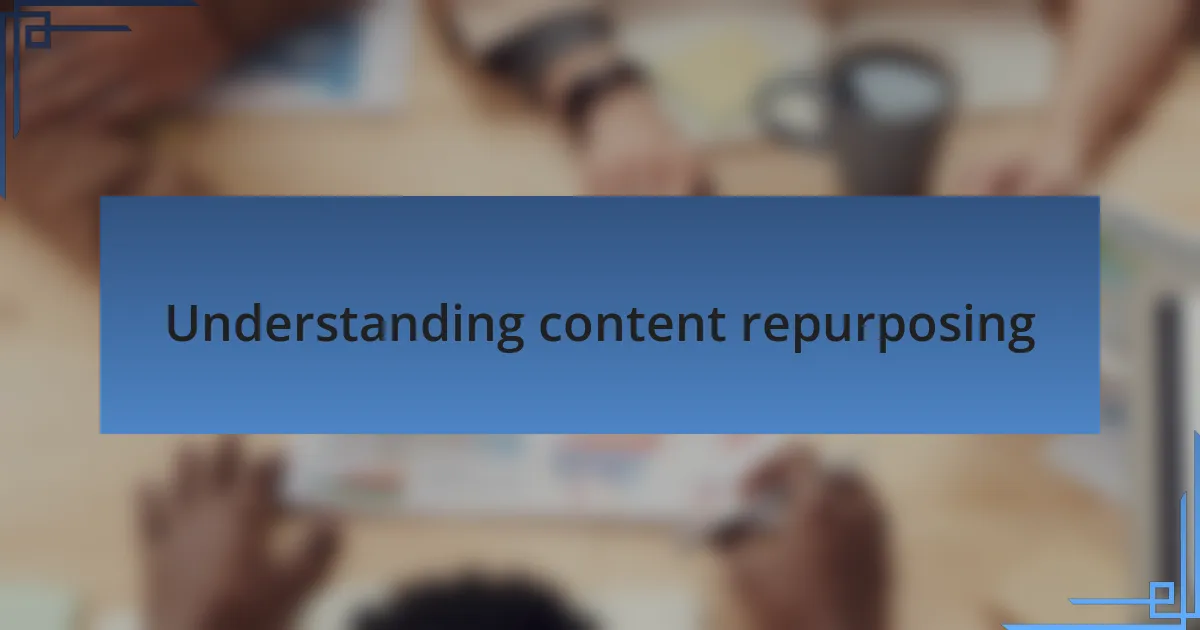
Understanding content repurposing
Content repurposing is the process of taking existing content and transforming it into different formats to reach diverse audiences. I remember when I first repurposed a blog post into a video tutorial; the reaction was overwhelming. It struck me how a single idea could resonate in multiple ways, capturing attention that text alone sometimes misses.
Have you ever felt overwhelmed by the constant demand for fresh content? This is where repurposing shines. Instead of grinding out new material continuously, you leverage what you’ve already created. I once turned a series of social media posts into an informative eBook, which not only saved me time but also provided added value to my audience.
Understanding content repurposing means recognizing it as an efficient strategy to amplify your message. It’s not just about recycling; it’s about reimagining. When I see engagement spike after sharing a repurposed infographic created from a detailed report, I can’t help but feel excited! The journey of one idea finding new life is truly rewarding and shows the potential depth within your existing content.
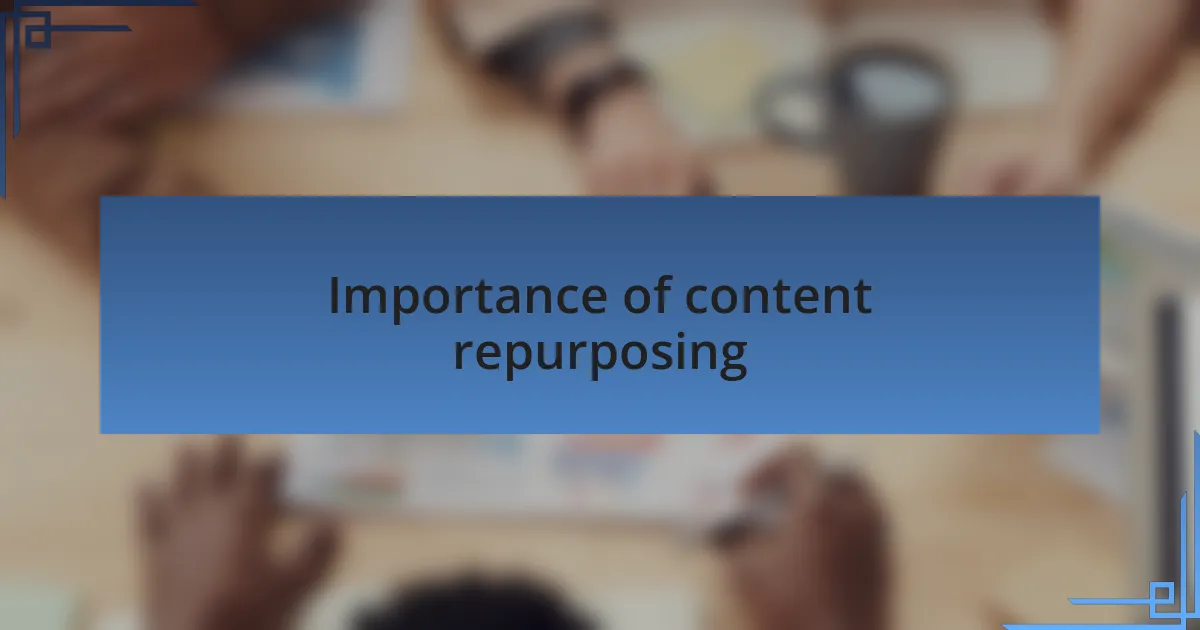
Importance of content repurposing
Repurposing content is crucial for maximizing the reach of your ideas and insights. I once took a podcast episode and transformed it into several blog posts, each focused on different key points we discussed. The result? It opened up new conversations in the comments section, unveiling unexpected interests from my audience.
Have you ever wished you could clone your best-performing content? That’s the magic of repurposing. For example, my team turned a successful webinar into a series of bite-sized videos. Not only did we attract viewers who prefer shorter content, but we also connected with new followers who might not have engaged otherwise. It’s fascinating to see how one piece can evolve to fit various preferences.
This strategy also strengthens your brand’s presence across multiple platforms. I remember feeling a surge of motivation when I saw responses on different social media channels from a single research report we transformed into an infographic. It reinforced the idea that your content can have multiple lives, each one bringing in fresh perspectives and discussions.
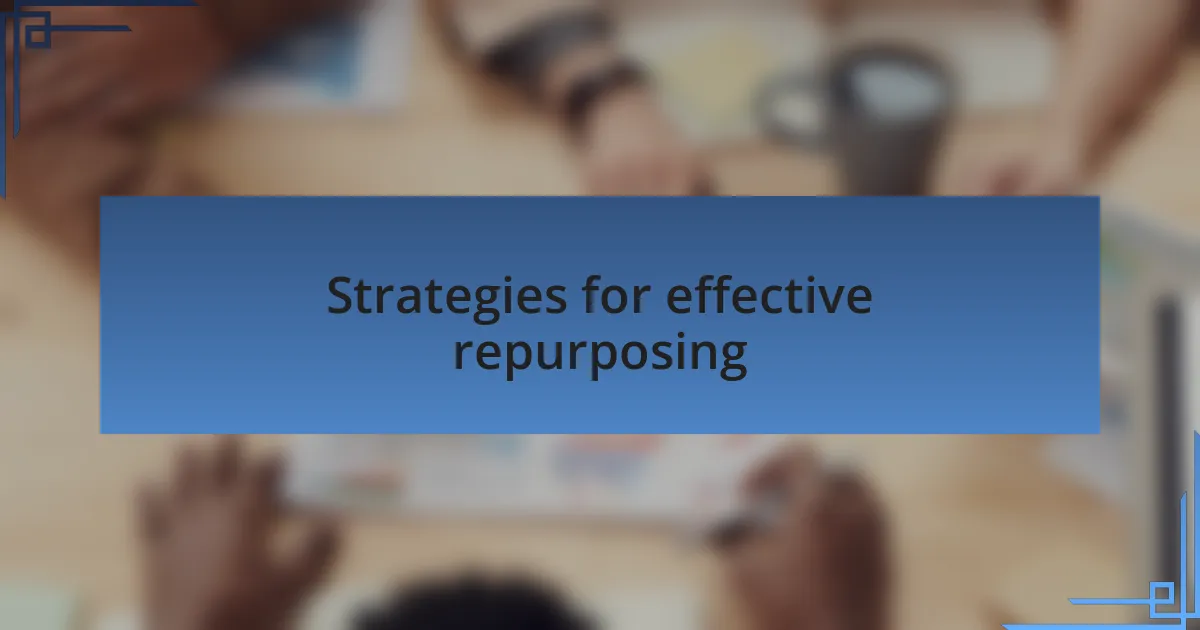
Strategies for effective repurposing
When it comes to repurposing content, one effective strategy is to tailor it to fit different formats. I remember converting a comprehensive eBook into an engaging slide deck for a live presentation. This not only allowed me to communicate the core ideas succinctly but also helped me connect with an audience that prefers visually driven content. Have you considered which formats your audience gravitates toward?
Another powerful approach is to update older content with fresh insights. For example, I revisited a popular article I had written two years ago and added new data and examples. The reaction was overwhelmingly positive, as existing readers appreciated the updates while new readers gained access to revived information. It made me wonder—how often do we overlook the potential of our existing work by not revisiting it?
Moreover, consider leveraging user-generated content. I once encouraged my audience to share their experiences related to a topic I covered. The stories they submitted not only enriched the conversation but also provided me with fresh angles to explore in future content pieces. Isn’t it amazing how engaging your community can unlock a treasure trove of ideas?
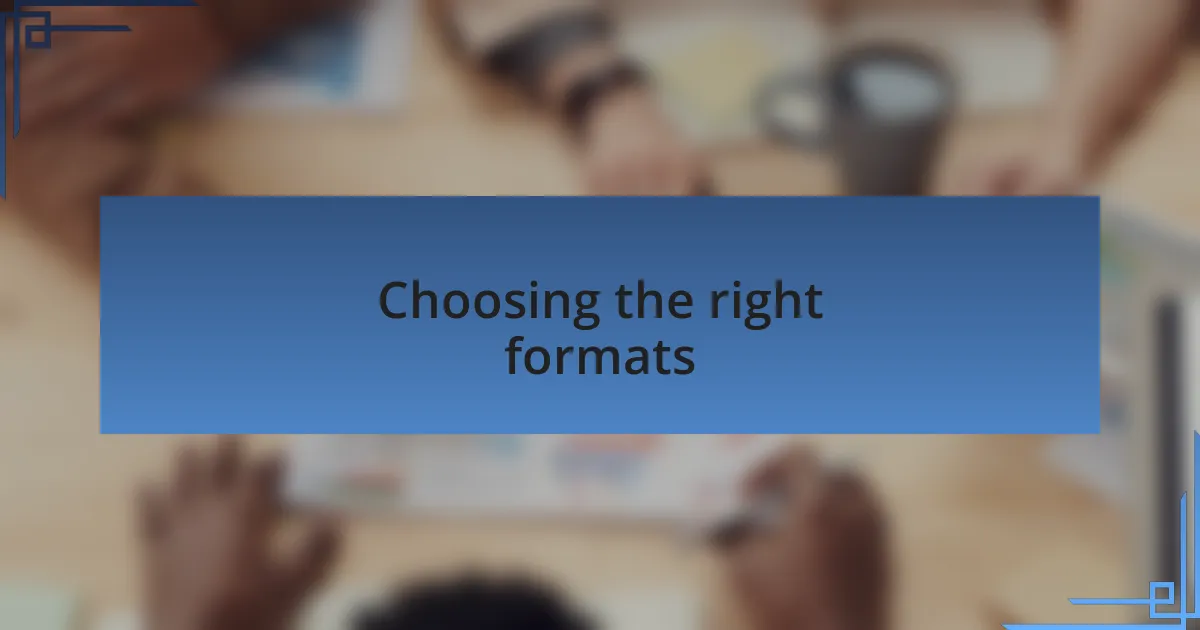
Choosing the right formats
When selecting formats for repurposing, it’s essential to consider your audience’s preferences. I once found that my blog articles resonated more when transformed into podcast episodes. The listeners appreciated the more personal touch that audio provided, making them feel connected as if they were in a conversation with me. Have you thought about what mode your audience prefers to consume information in—audio, visual, or text?
I love experimenting with contrasting formats. For instance, I turned a lengthy video tutorial into a series of infographics. This change not only reached a different audience segment but also appealed to those who prefer quick takeaways. It made me realize that sometimes, the most unexpected format shifts can yield impressive engagement rates. What formats have you overlooked that could spark new interest?
Lastly, think about the context of use. One time, I adapted an exhaustive white paper into a simple FAQ format for social media. The result? A flood of inquiries and interactions I didn’t anticipate. It was exhilarating to see how a shift in format can tailor content to fit the need for quick, digestible information. How are you framing your content to meet the varying contexts in which it might be consumed?

Tools for content repurposing
When it comes to tools for content repurposing, I’ve found that platforms like Canva or Adobe Spark greatly enhance visual elements. The first time I used Canva to create eye-catching graphics from my blog posts, I was blown away by how easy it was. I still remember the thrill of seeing my written words transformed into vibrant visuals that resonated well with my audience on social media. Have you ever tried this? The right visuals can make all the difference in how your content is perceived.
Additionally, I often rely on tools like Buzzsprout for turning my articles into podcasts. The first time I published a podcast episode based on a popular blog post, it felt like opening a new door of accessibility. Suddenly, my ideas reached a broader audience who preferred to listen while commuting. Isn’t it fascinating how a single piece of content can find new life in a different format?
Lastly, I can’t recommend repurposing tools like Repurpose.io enough. This automated tool allows me to take my videos and turn them into short snippets for platforms like Instagram or TikTok without spending hours on edits. The first time I used it, I was surprised at how much engagement those quick clips generated. Have you considered how automation can streamline your repurposing process and free up your creative energy?
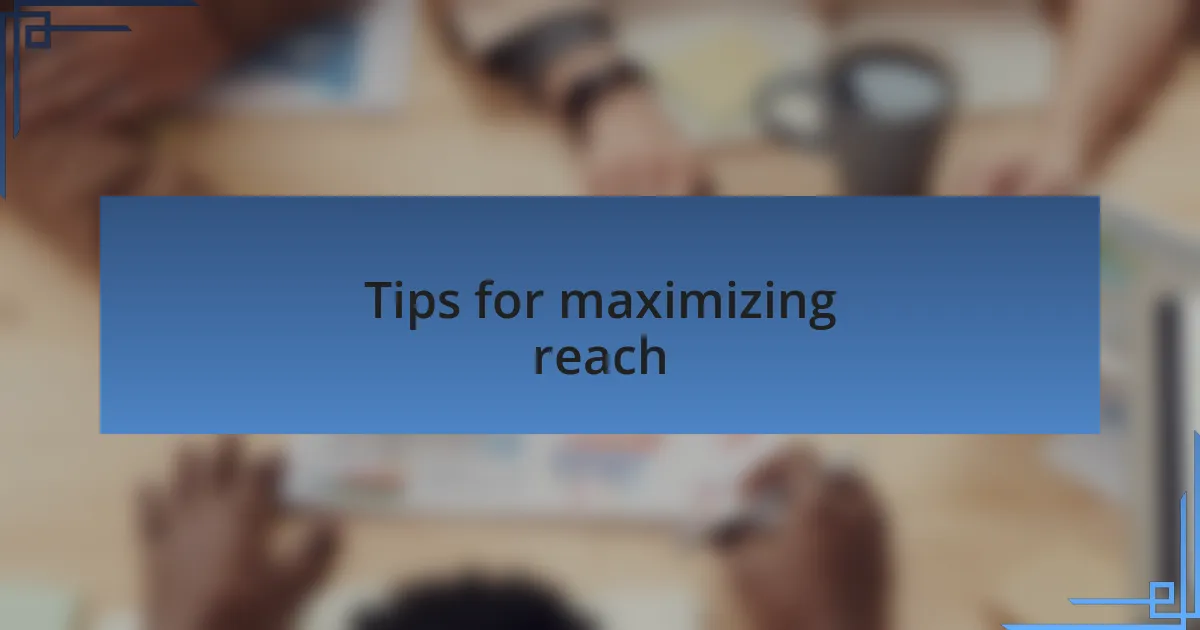
Tips for maximizing reach
To maximize your reach, consider tailoring your content to different platforms. I remember when I adapted a blog post into a series of tweets; the engagement skyrocketed. Crafting bite-sized insights allowed my audience to share easily, extending my reach beyond my usual followers. Have you thought about how easily shareable content can create new connections?
Utilizing hashtags effectively can further amplify your visibility. I’ve seen firsthand how using targeted hashtags on Instagram boosted the reach of my repurposed content significantly. It felt incredible to tap into conversations happening around trending topics. Are you taking full advantage of the hashtag potential on your social media posts?
Lastly, don’t underestimate the power of cross-promotion. When I promoted my podcast episode in a Facebook group related to the topic, I was amazed at the influx of new listeners. It’s like having a whole new community discover your work! Have you explored partnerships that can introduce your content to fresh eyes?